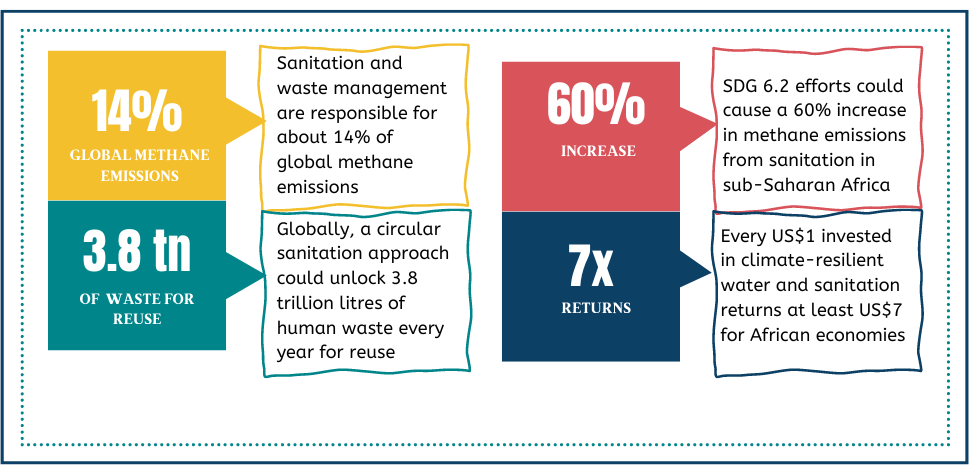What We Do /
Focus on Climate & Sustainability
Sanitation, hygiene and menstrual health are closely linked to environmental and planetary health.
Despite this, global estimates of emissions of greenhouse gasses do not take into account the complex service chain in rapidly growing cities in low- and middle-income countries.
In Kampala for example, it is estimated that sanitation could represent more than half of the total city-level emissions, approximately 189 kt of CO2 per year. Emissions associated with long periods of storage of faecal waste in sealed anaerobic tanks (49%), discharge from tanks and pits direct to open drains (4%), illegal dumping of faecal waste (2%), leakage from sewers (6%), wastewater bypassing treatment (7%) and uncollected methane emissions at treatment plants (31%), are contributing to high levels of greenhouse-gas emissions.
As the world heads into a deepening climate crisis, climate-resilient sanitation and hygiene infrastructure are also critical as a first line of protection against the spread of infectious diseases especially during natural catastrophes and extreme weather events.
Importantly, these sectors can also support sustainability ambitions. In addition to accelerating efforts to achieve SDG 6.2 and unlocking billions of dollars worth of related services, incomes and growth, adopting a circular sanitation approach has the potential to unlock 3.8 trillion litres of human waste every year from toilets and sanitation systems for reuse in the wider economy for agricultural and energy purposes.
As we work on building self-sustaining sanitation economies, with circularity built in, environmental sustainability remains core to our approach.

